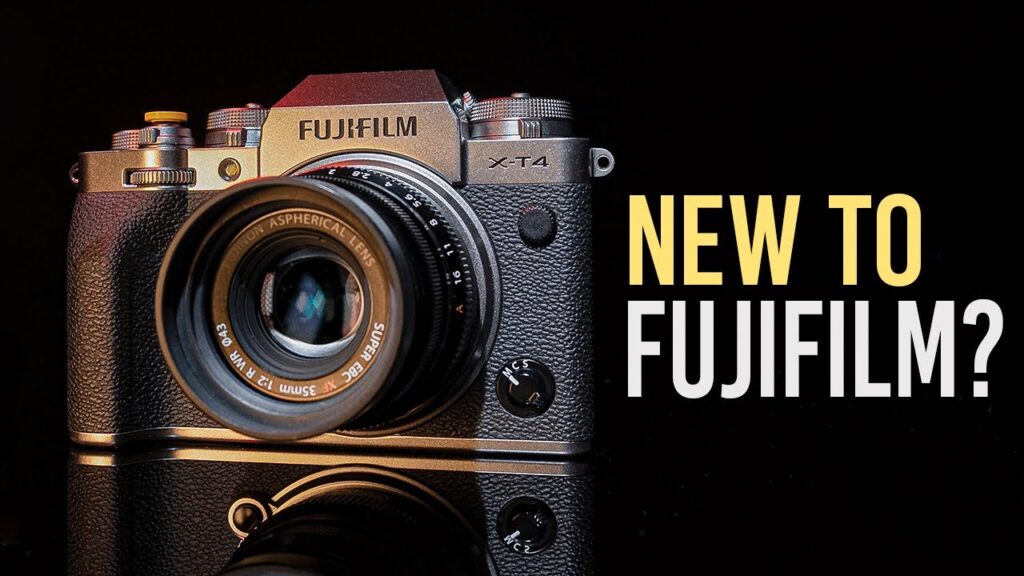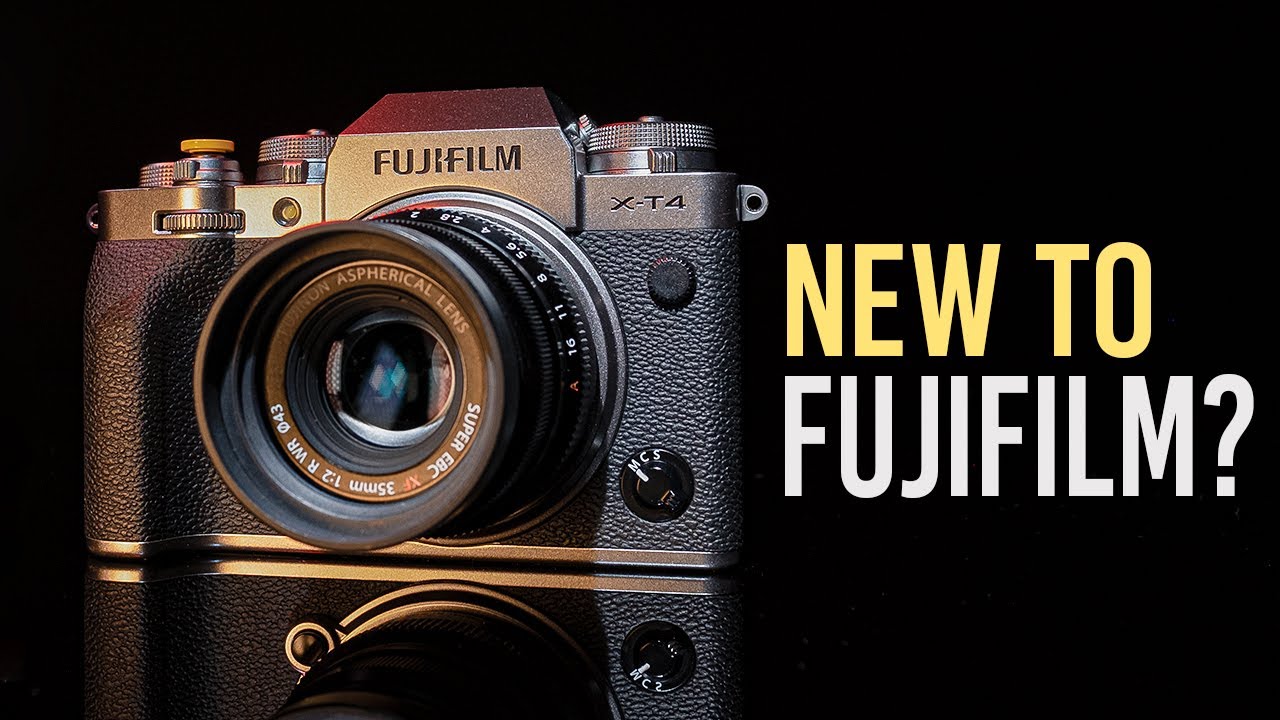If you’re stepping into the world of Fujifilm, you’re in for a treat, especially with the X-T series. This guide is packed with essentials to get you started, focusing on useful tips like camera ergonomics and mastering the unique focus modes.
You’ll learn how to maximize Fujifilm’s film simulations, appreciate the distinctive dials for aperture, shutter speed, and ISO, and understand the advantages of high ISO performance. By the end, you’ll be customizing your camera like a pro and capturing stunning shots effortlessly.
Camera Usage Tips
JPEG Shots
When you start using a Fujifilm camera, one of the first things you’ll notice is how much it encourages the use of JPEGs. Unlike other camera brands that offer standard profiles like “portrait” or “landscape,” Fujifilm cameras use something called film simulations. These simulations, such as Provia, Classic Chrome, and Acros, are designed to emulate Fujifilm’s classic film stock. The rich colors and contrasts produced by these simulations often make it unnecessary to shoot in RAW, giving you ready-to-share JPEGs straight out of the camera.
Dials & Modes
Switching from a camera with a traditional PASM (Program, Aperture priority, Shutter priority, and Manual) dial to Fujifilm’s system may initially seem daunting. Instead of a single dial, Fujifilm cameras like the X-T series use separate dials for aperture, shutter speed, and ISO. Here’s a quick guide to get you up to speed with these dials:
- Automatic Mode: Set all three dials—aperture, shutter speed, and ISO—to ‘A’. This will put the camera in full auto mode, where it makes all the exposure decisions for you.
- Shutter Priority Mode: Set the shutter speed dial to the desired speed and leave the other two dials on ‘A’. The camera will adjust aperture and ISO automatically.
- Manual Mode: Set fixed values for all three dials. In this mode, you have full control over the camera’s settings, but exposure compensation won’t work.
By understanding these dials, you’ll unlock a more tactile and engaging photography experience.
ISO Handling
High ISO Performance
Fujifilm cameras handle high ISO pretty well, which is great news for shooting in low-light conditions. Don’t hesitate to push the ISO up to 3200 or even 6400. The noise levels remain manageable, especially if you plan to process your photos later.
Recommended Auto ISO Settings
For new users, it’s beneficial to set an auto ISO range. A good starting point is from ISO 160 to 3200. Here’s how to do it:
- Go into your camera settings.
- Navigate to the camera icon and choose ISO Auto Setting.
- Set Auto 1 with the following parameters:
- Default Sensitivity: 160
- Max Sensitivity: 3200
- Minimum Shutter Speed: Auto, but you can set this manually to something like 1/125th or 1/250th of a second if you’re shooting fast-moving subjects.
By setting these parameters, you can focus more on your shot composition and less on worrying about ISO settings.
Focusing Modes
Autofocus and Manual Focus
Fujifilm cameras offer excellent autofocus capabilities, but learning manual focus can be exceptionally rewarding. Rather than mechanically adjusting the lens, Fujifilm’s manual focus sends an electronic signal from the lens to the camera. This electronic focus mechanism is consistent across all Fuji lenses.
Manual Focus Assist Tools
To aid in manual focusing, Fujifilm provides several assist tools:
- Focus Peak Highlight: This tool highlights the areas in focus with a pinstripe or color overlay.
- Manual Focus Zoom Check: This tool zooms in on the focused area to give you a closer look.
To activate these tools, head to the AF/MF settings in your camera menu. You can switch between them using the rear command dial when the camera is in manual focus mode. These tools make manual focusing more intuitive and precise.

This image is property of i.ytimg.com.
Customizing Camera
Rear Buttons and My Menu
One of the joys of using a Fujifilm camera is the ability to customize it to your preferences. By holding down the DISP (Display Back) button, you can reassign functions to the rear buttons for quicker access to your most-used features.
Using My Menu under the user settings allows you to collect frequently accessed functions in one place. This is particularly useful for raw shooters, making it more beneficial than the Q menu.
General Tips
Boost Mode
Always use Boost Mode to get the best performance out of your camera. Boost Mode enhances responsiveness, making your shooting experience smoother.
Ergonomics
Considering accessories like a hand grip can significantly improve your camera’s ergonomics. This is especially helpful if you’re using larger lenses.
Battery Management
Understand your battery usage and always carry extra batteries. This ensures you don’t miss any crucial shots.
Menu Usage
When shooting in raw, you may find the personal menu more beneficial than the Q menu. It provides quicker access to your frequently used settings, making your shooting experience more seamless.
Battery Types
NP-W126S Battery
The Fujifilm X-T series (up to X-T3) typically uses the NP-W126S battery. While reliable, these batteries are known for their shorter battery life.
Battery Upgrade
For better battery performance, consider upgrading to the NP-W235 battery. These are compatible with newer models and offer significantly longer battery life.
Power Modes
Normal/Economy Modes
Normal and economy modes extend battery life but can reduce camera performance, particularly affecting autofocus speed.
Performance Tip
To ensure full camera performance, always use Boost Mode. Keep extra batteries handy to compensate for the increased power usage.
Ergonomics
Small Hand Grip
Fujifilm cameras are known for their compact size, which can sometimes make them uncomfortable to hold, especially with larger lenses.
Solutions
- Battery Grip: Adds ergonomics and allows for vertical shots. However, it can be expensive.
- Thumb Rest: A budget-friendly option, though it may loosen over time.
- JJC HG Metal Grip Extender: Offers the best ergonomic compromise, allowing for easy tripod attachment.
- Shutter Release Button: This simple accessory, costing around $8, can improve your shooting comfort substantially.
Conclusion
Understanding and customizing your Fujifilm camera can significantly improve your photography experience. Fujifilm cameras offer excellent equipment, a variety of lenses, and a fun shooting experience.
General Recommendation
Overall, Fujifilm cameras provide a high-quality and enjoyable photography experience. Whether you’re new to Fujifilm or a seasoned user, there’s always something new to discover.
Closing
Thank you for reading! If you found these tips helpful, consider liking, subscribing, and checking any affiliate resources to support the community. Welcome to the world of Fujifilm; your photography journey just got a lot more exciting!

